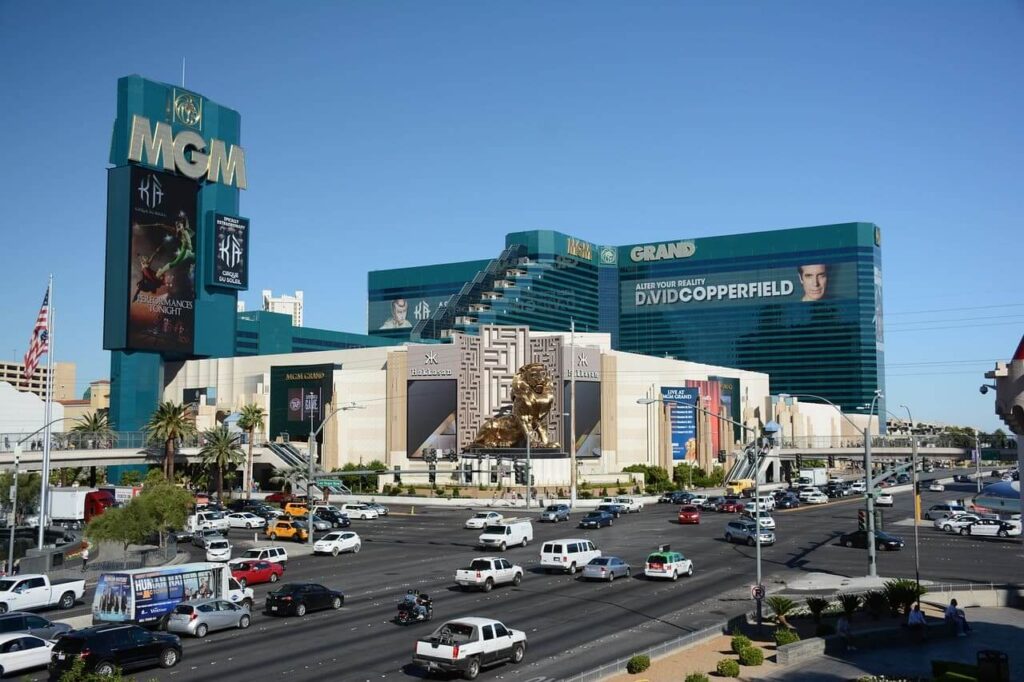Las Vegas, the city of gaming and entertainment, was recently rocked by large-scale ransomware attacks. Two of the hotel and casino industry’s biggest players, MGM Resorts (Bellagio, Cosmopolitan…) and Caesars, were hit hard. These cyberattacks not only disrupted their operations, but also raised questions about information security in the digital age. This case, far from being an isolated one, highlights the urgent need for companies to reinforce their cyber-security precautions.
Table des matières
ToggleTargeted attacks cripple hotels and casinos
On September 7, a Caesars Entertainment breach report was made public, revealing a social engineering attack directed against a third-party IT support provider. Shortly afterwards, rumors circulated that MGM Resorts had been the victim of a similar attack.
The attacks orchestrated by the BlackCat Ransomware group left an indelible mark on MGM Resorts and Caesars in Las Vegas. The consequences were immediate and devastating. Slot machines, usually animated by the clatter of coins and flashing lights, displayed error messages, leaving thousands of players distraught. Hotel room access systems were also out of order, forcing staff to resort to manual methods to check in guests, creating long queues and palpable frustration among hotel visitors.
In short, the entire IT system of the targeted establishments went down. And in Las Vegas, when it comes to hotels, excess is the order of the day. The MGM Grand Las Vegas alone boasts 6,852 rooms and over 3,000 slot machines! It’s easy to imagine the scale of the damage caused by this ransomware attack.

In addition, all websites , as well as their mobile applications, were inaccessible, hampering reservations and customer interactions. Digital room keys were invalid, and ATMs were out of order, adding another layer of discomfort for guests. Casino halls were deserted, a rare sight in the city that never sleeps. The shutdown not only resulted in colossal financial losses, but also tarnished the reputation of these iconic establishments. The incident highlighted the vulnerability of critical infrastructures to cyber threats, even in the seemingly invincible gaming industry.
Social engineering, BlackCat Ransomware’s discreet but devastating weapon
The BlackCat Ransomware group has once again demonstrated the power of social engineering in the world of cybersecurity. Rather than deploying complex techniques or advanced malware, they opted for a more subtle but equally effective approach. By mining information available on LinkedIn, they identified an MGM employee and used this data to trick the company’s IT helpdesk. With a simple conversation, they managed to gain privileged access, proving that even a multi-billion dollar company can be vulnerable to a well-orchestrated attack.
Hackers from the ALPHV/BlackCat group claimed responsibility for the attacks. They used social engineering techniques to gain access to the systems. This method, although simple, has proved effective against a company valued at several billion dollars.

This attack strategy highlights the need for companies to step up cybersecurity training and awareness among their employees. A simple audit or increased distrust could have prevented this intrusion. The incident also highlights the importance of controlling professional information shared on social networking platforms, as these can act as a springboard for malicious actors seeking to compromise an organization’s systems.
BlackCat Ransomware: a hefty bill for Las Vegas giants
The impact of the BlackCat Ransomware attacks on MGM and Caesars was felt far beyond the gaming halls and hotel rooms. The financial repercussions were considerable, with immediate revenue losses due to the shutdown of gaming and lodging operations. In addition, customer confidence has been shaken, which could have long-term implications for attendance and reputation. According to some sources , Caesars Entertainment chose to pay a ransom of $30 million to avoid more serious damage, a decision that raises ethical and legal questions in the industry.

On the other hand, post-attack recovery costs for MGM and Caesars will also be high, encompassing technical remediation, crisis communication, and potentially future litigation. Caesars’ ransom payment highlights the difficult decision companies have to make when faced with such attacks. It also raises the question of how effective current security measures are, and how prepared companies are in the face of cyber-attack scenarios. The BlackCat Ransomware attacks serve as a stark reminder that cybersecurity is a crucial issue that requires ongoing attention and investment.
Cybersecurity, a human and technological challenge
The BlackCat Ransomware attacks on MGM and Caesars in Las Vegas reveal the fragility of digital infrastructures, even within industry giants. Social engineering, a simple but formidable method, has paved the way for massive disruption, highlighting the crucial importance of cybersecurity awareness and training. The financial and operational repercussions, as well as the dilemmas surrounding ransom payments, underline the complexity of the challenges facing businesses in the digital age. This incident serves as a poignant reminder that cybersecurity is not just about technology, but also about human vigilance and proactive preparation.
